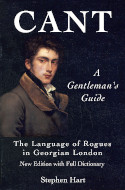THE ROSE TAVERN COVENT GARDEN
This noted Tavern, on the east side of Brydges-street, flourished in the seventeenth and eighteenth centuries, and from its contiguity to Drury-lane Theatre, and close connection with it, was frequented by courtiers and men of letters, of loose character, and other gentry of no character at all. The scenes of The Morning Ramble, or the Town Humour, 1672, are laid "at the Rose Tavern, in Covent Garden," which was constantly a scene of drunken broils, midnight orgies, and murderous assaults, by men of fashion, who were designated "Hectors," and whose chief pleasure lay in frequenting taverns for the running through of some fuddled toper, whom wine had made valiant. Shadwell, in his comedy of the Scowrers, 1691, written at a time when obedience to the laws was enforced, and these excesses had in consequence declined, observes of these cowardly ruffians: "They were brave fellows, indeed! In those days a man could not go from the Rose Tavern to the Piazza once, but he must venture his life twice."
Women of a certain freedom of character frequented taverns at the commencement of the last century, and the Rose, doubtless, resembled the box-lobby of a theatre. In the Rake Reformed, 1718, this tavern is thus noticed:
"Not far from thence appears a pendent sign,
Whose bush declares the product of the vine,
Whence to the traveller's sight the full-blown Rose
Its dazzling beauties doth in gold disclose;
And painted faces flock in tally'd clothes."
Dramatists and poets resorted to the house, and about 1726, Gay and other wits, by clubbing verses, concocted the well-known love ditty, entitled Molly Mogg of the Rose, in compliment to the then barmaid or waitress. The Welsh ballad, Gwinfrid Shones, printed in 1733, has also this tribute to Molly Mogg, as a celebrated toast:
"Some sing Molly Mogg of the Rose,
And call her the Oakingham pelle;
Whilst others does farces compose,
On peautiful Molle Lepelle."
Hogarth's third print of the Rake's Progress, published in 1735, exhibits a principal room in the Rose Tavern: Lethercoat, the fellow with a bright pewter dish and a candle, is a portrait; he was for many years a porter attached to the house.
Garrick, when he enlarged Drury-lane Theatre, in 1776, raised the new front designed by Robert Adam, took in the whole of the tavern, as a convenience to the theatre, and retained the sign of the Rose in an oval compartment, as a conspicuous part of the decoration, which is shown in a popular engraving by J. T. Smith.
In D'Urfey's Songs, 1719, we find these allusions to the Rose:
"A Song in Praise of Chalk, by W. Pettis.
"We the lads at the Rose
A patron have chose,
Who's as void as the best is of thinking;
And without dedication,
Will assist in his station,
And maintains us in eating and drinking."
"Song.—The Nose.
"Three merry lads met at the Rose,
To speak in the praises of the nose:
The flat, the sharp, the Roman snout,
The hawk's nose circled round about;
The crooked nose that stands awry,
The ruby nose of scarlet dye;
The brazen nose without a face,
That doth the learned college grace.
Invention often barren grows,
Yet still there's matter in the nose."
John Timbs
Club Life of London Vol. II
London, 1866

